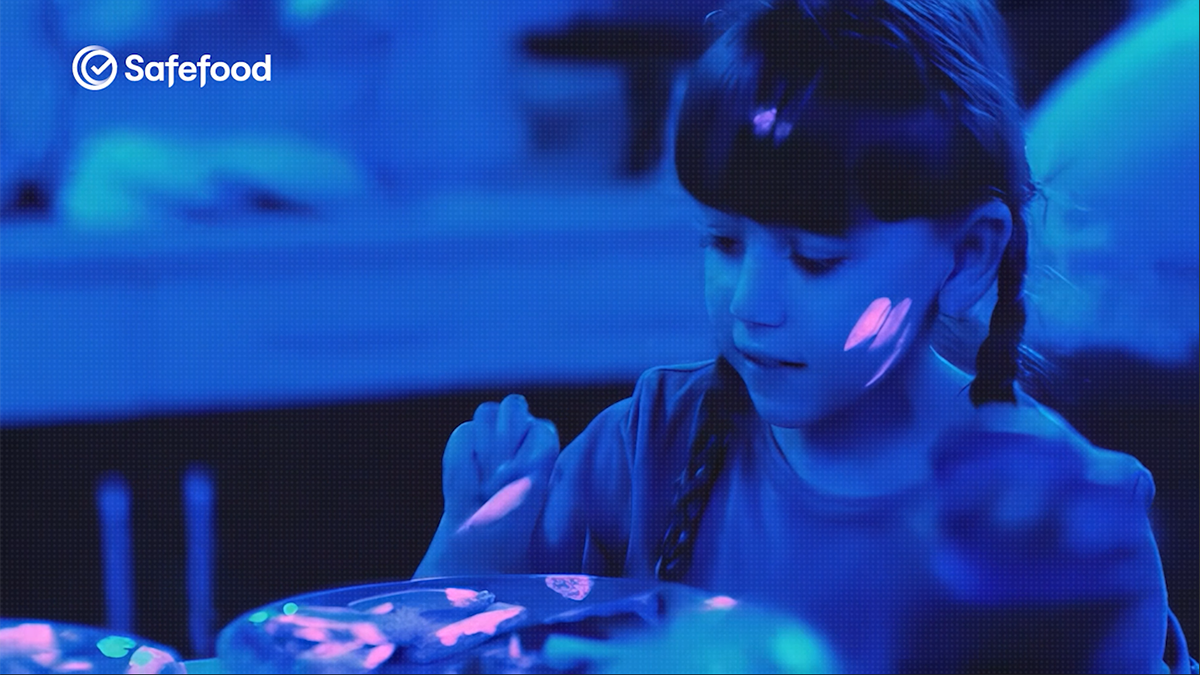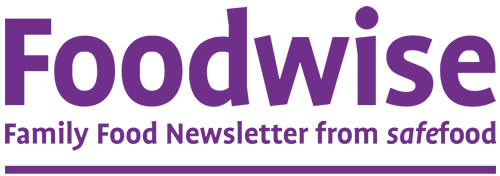How to stop food poisoning bacteria from spreading

Raw food can carry bacteria that cause food poisoning. These bacteria can spread to other food through hands, utensils and surfaces. Clean as you go to stop them spreading.
When you handle raw food, harmful bacteria can get onto your hands and onto surfaces such as worktops or chopping boards. From there, they can spread onto other food and anything else you touch, such as your phone, kitchen tools or even family members.
The spread of harmful bacteria is called cross-contamination.
Bacteria can spread onto food because they can survive on surfaces for several days and this increase the likehildood of it spreading to other food. This is a common cause of food poisoning.
Watch this video to see how easily food poisoning bacteria can spread in your kitchen.
Who is most at risk?
People with a weak immune system are especially at risk of food poisoning. They include young children, older people, pregnant women and people who are already unwell. For them, even a small amount of harmful bacteria can cause illness.
Symptoms of food poisoning usually begin within one or 2 days of contamination – but may appear within a few hours or several weeks later.
Read more about the causes, symptoms and treatments for food poisoning.
Clean as you go
Cleaning as you go is the best way to stop food poisoning bacteria before they spread. Keep your hands clean by washing them with warm soapy water. Use hot soapy water to clean cloths, sponges and surfaces like worktops, chopping boards, utensils and the fridge. This will keep everyone safe from illness.
Find out more
- When to wash hands
- When to clean dishcloths and sponges
- When to clean surfaces, worktops and chopping boards
- How to use cleaning products safely
- How to clean chopping boards
- When to wash cooking utensils
- How to keep your fridge bacteria free
- How to clean raw meat packaging
- Kitchen action plan
When to wash hands
After handling raw food, washing your hands with warm soapy water for at least 20 seconds is the best way of preventing food poisoning bacteria from spreading.
Our research has shown that over 80% of people – that’s 8 out of 10 – forget to wash their hands properly after handling raw minced meat or chicken.
Here’s when you should wash your hands:
- Before and after preparing or eating food
- After handling raw meat, poultry, fish or eggs
- After touching unwashed fruit and vegetables
- After handling rubbish, bins or packaging
- After coughing, sneezing or blowing your nose
- After touching pets or pet food
- After using the toilet
- After using a phone or other mobile device while preparing food
Read more on how to wash your hands properly.
When to clean dishcloths and sponges
Damp dishcloths and sponges are perfect hiding places for harmful bacteria.
Cloths that are left crumpled up stay wet, so they often contain even larger numbers of bacteria.
So how often should you change dishcloths and sponges, and how can you keep them clean?
- Swap your used dishcloth or sponge for a clean one at least every 2 days.
- Get a clean one immediately if you use it to wipe up raw meat or vegetable juices.
- Wash them if they smell or look dirty.
- Wash them on a hot machine cycle or boil them in water for 15 minutes.;
- After each use of a dishcloth, squeeze out excess water and hang it up, so it can dry faster.
- Store dishcloths and sponges in a dry airy place. Do not leave them in the sink.
- Squeeze out excess water so it can dry faster.
- Have different dishcloths or sponge for washing dishes and wiping surfaces.
When to clean surfaces and worktops
Food poisoning bacteria can live on worktops and other surfaces for days so they must be cleaned thoroughly with hot soapy water after contact with raw food.
- Wipe worktops before and after preparing and cooking food.
- Wipe up spills immediately. Change the dishcloth or sponge if it touches raw meat or vegetable juices.
- After cutting raw meat, fish, eggs or dirty veg, immediately wash the chopping board, utensils and worktop with hot soapy water.
- Clean anything you touch while you are preparing food, such as your fridge, oven, microwave, air fryer, drawer handles and kitchen tap.
How to use cleaning products safely
Here’s how you can use kitchen sprays or wipes to kill bacteria:
- Read the label and make sure the product is safe for food surfaces. Always follow the instructions.
- Using a clean dishcloth, wipe away crumbs, dirt and grease.
- Apply the disinfectant or kitchen sanitiser.
- Leave the product on the surface for the time stated on the bottle to make sure it can work properly and kill bacteria.
- Rinse or wipe the surface as recommended.
- Store cleaning products safely – keep them away from food and out of reach of children.
When to clean chopping boards
Whatever type of chopping board you have, you must clean it thoroughly with hot soapy water after using it. Even the tiniest cracks and grooves on chopping boards can hide food poisoning bacteria.
Two important tips:
- Always wash your board thoroughly after it has been touched by raw meat, poultry, seafood or raw vegetables.
- Never flip your chopping board to use on the other side without washing the whole board.
How to clean chopping boards:
- After each use, wipe off bits of food and dirt.
- Then wash it with hot soapy water and rinse well.
- A hot wash in the dishwasher is a good way to clean plastic chopping boards. Always check they are dishwasher safe. Otherwise, a good scrub in the sink with hot soapy water will do the same job.
- Do not leave wooden chopping boards to soak and do not put them in the dishwasher. Instead, wash them with hot soapy water, rinse and leave upright to dry thoroughly.
- You can also use a clean tea towel to dry chopping boards by hand.
When to wash cooking utensils
Our research found that 72% of people did not wash knives properly after cutting raw chicken. Not washing knives properly can leave food poisoning bacteria behind.
Knives, spoons and forks that touch raw meat or poultry must be washed with hot soapy water or cleaned in the dishwasher before being used again.
How to keep your fridge free from food poisoning bacteria
Food poisoning bacteria can spread in your fridge if you do not clean it often. To keep your fridge safe:
- Clean handles, shelves and compartments regularly with warm soapy water.
- Rinse after washing and dry with a clean tea-towel or kitchen roll.
- Wipe up spills straight away.
- Throw out foods that are past their Use-by date.
- Always store raw meat and poultry on the bottom shelf and store vegetables in the vegetable compartment. Keep ready-to-eat food on the top shelves.
How to clean raw meat packaging
Food-poisoning bacteria can survive on food packaging for over 24 hours. From there, they can spread to surfaces and bin covers. Here’s what to do with meat packaging:
- Pack raw meat and poultry separately from ready-to-eat foods. If you use reusable bags, keep one bag for raw meats only.
- When you remove raw meat, poultry and fish from its packaging, place it directly onto a chopping board or cooking tray or straight into a pot or airfryer. Do not wash chicken.
- After any food preparation, wash all surfaces and utensils with hot soapy water
- Wash packaging in warm soapy water before recycling.
- After putting the packaging in the bin, clean the surrounding surfaces with hot soapy water.
Kitchen action plan
- Clean as you go: Wash hands and surfaces right away with warm or hot soapy water.
- Swap dishcloths and sponges often: Change them every 2 days or immediately if they touch raw meat.
- Scrub chopping boards and utensils: After every use, especially when preparing raw foods.
- Clean the fridge: Wipe handles, throw out old food and clean shelves regularly.
- Store food correctly: Keep raw meat or poultry on the bottom shelf of the fridge to make sure no juices drip onto other food.




